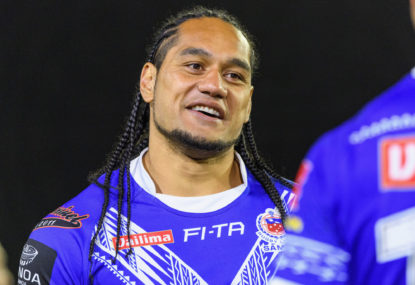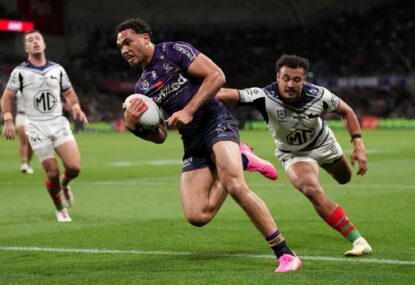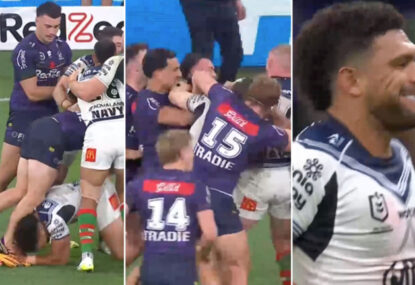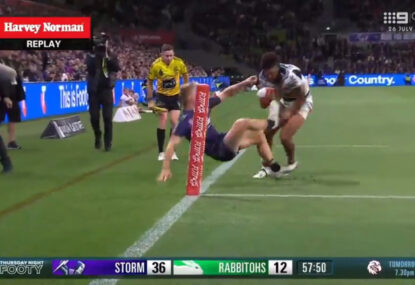This weekend’s Pacific Tests are the centrepiece for a welcome return of elite international footy to Australia after more than two years in pandemic-induced hibernation.
With a World Cup on the horizon, they provide a crucial chance for teams to tune up – and also for players to engage with their culture and heritage.
For Samoan, Tongan, Fijian, Cook Islander, Papuan New Guinean and New Zealander players, this week will have been circled on the calendar all year – certainly, any that I have met in the course of this job has mentioned these games, along with the World Cup, as highlights.
The NRL’s most recent data suggests that 45% of the men’s playing group is of Pacific heritage, a number that has only grown in recent years, and their role in the sport in 2022 cannot be underestimated.
That’s why understanding Pacific culture is so important to being successful in the NRL. The best teams do it, by creating workplace environments that are culturally appropriate, that allow their players to thrive.
Dr David Lakisa, managing director of Talanoa Consultancy, is helping people across Australian sport to improve their interactions with Pacific people, holding conferences that seek to introduce key concepts in Pacific culture to foster better environments.
I attended one in May – along with representatives from several leading NRL clubs, as well as Super Rugby, Rugby Australia and Netball Australia – and the experience was ground-breaking.
“The Talanoa conferences are an opportunity to authenticate and validate Pacific voices and their contribution to sport,” Dr Lakisa said.

Tonga celebrate their win over Australia at Eden Park on November 2, 2019. (Photo by Fiona Goodall/Getty Images)
“Through the pan-Pacific methodology of ‘talanoa’ – similar to the Indigenous methodology of yarning circles – we are able to exchange skills, ideas and experiences in a culturally appropriate way.
“We’re bringing that approach and knowledge system in a way that organisations can apply and make it more culturally safe. It’s more than just about inclusion, it’s about innovation. It’s more than representation, it’s revitalisation.
“We’re trying to help shape these spaces to help everyone – players, their families, sponsors, stakeholders, employers.”
Even the introductions, normally a dry ice-breaking step at conferences, were exceptional, with Teo Reo Māori, Samoan, Fijian and Tongan greetings and performances.
The importance of welcoming, a key phase in building relationships with Pacific people, was foregrounded, before moving on to belonging, by creating a space that was welcoming and validating, and then servicing, by paying forward that feeling.
It’s easy to see how these things translate well onto a rugby league field: when 45% of your players are from one background, it is obvious that you need to understand and listen to their culture to create successful teams.
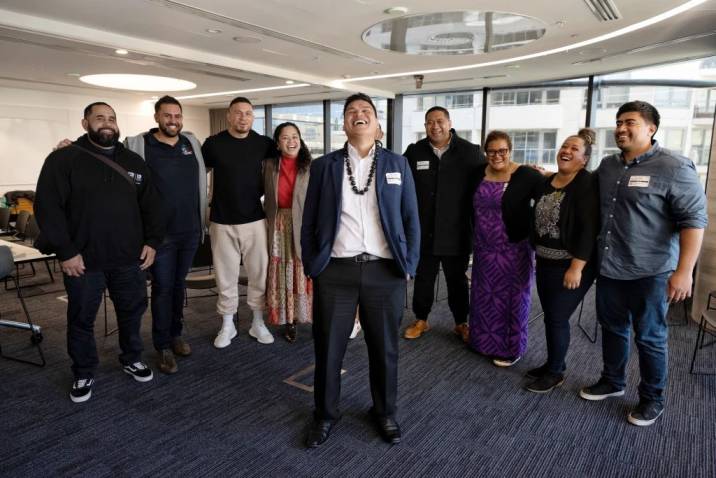
Talanoa Conference with David Lakisa Credit: Nick Moir
“Pacific cultural safety, considering the current representation of Pacific people in Australian sport, is a non-negotiable skill,” said David.
“You’ll be left behind if you’re not upskilling and staying up to date with Pacific research, methodology and evidence-based learning.
“Most organisations can help an athlete become fitter, faster and stronger, but not all organisations can help Pacific athletes feel safer, validated and productive.”
One attendee was Joe Galuvao, the former Kiwi and Samoan international forward, who now works in player wellbeing and pathways at Penrith.
“I would have benefitted a lot from having the education that our coaches and staff are getting now,” he said.
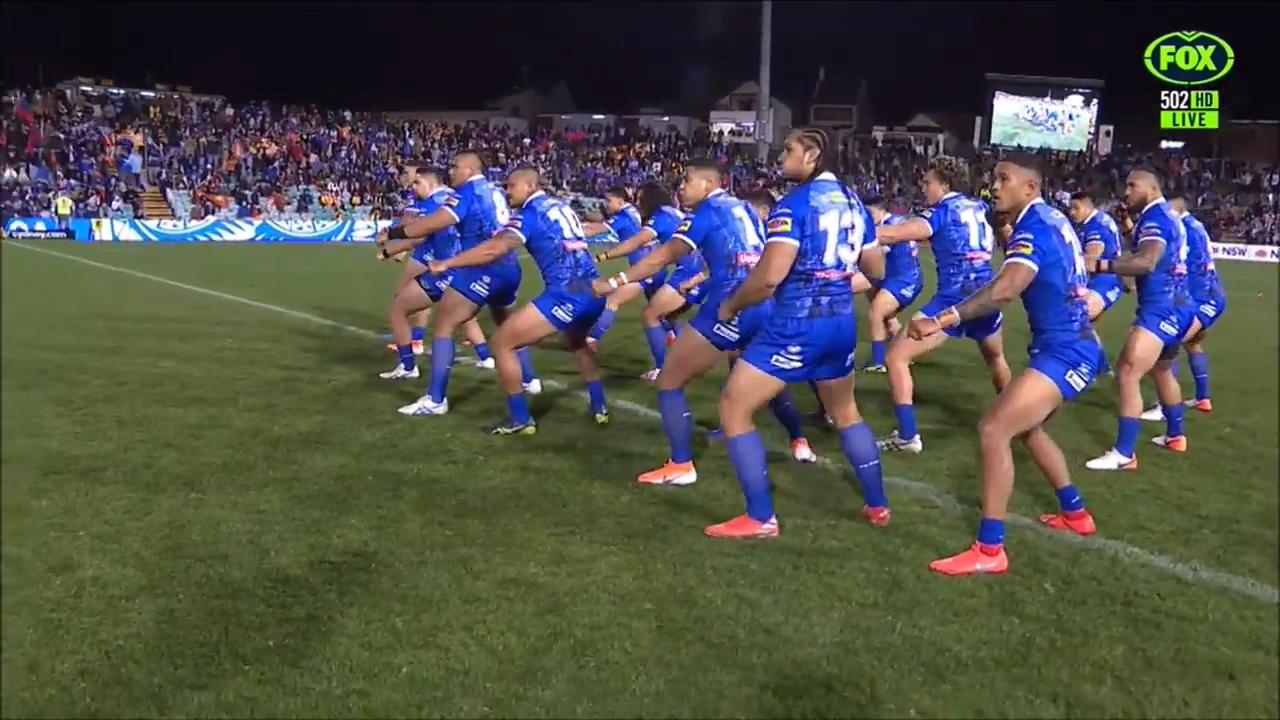
Samoa’s stirring Siva Tau is nothing short of spine-tingling
“A big part of that is understanding cultural practices and customs and being able to relate to our players.
“We’re a relational, collectivist society and having that embedded into how coaches approach and relate to players will get the best out of the players.
“From a strategic point of view and best practice for the club, the very fact that I’m employed by the Panthers shows how progressive they are and how they want to get the best out of their players.
“It’s the wellbeing and welfare of players, and their identity is connected to that – the communities that they come from and the people that they are, the strengths and values that make them authentic are to be celebrated.
“That’s a big part of those successful clubs off the field, and that translates onto the field. You can identify the successful clubs – they’re the ones who are doing great things off the field.”
Two words that came up time and again were ‘mana’ and ‘vā’, with the first referring to the prestige and respect inherent in individuals and things and the second referring to the ‘space between the space’, the unsaid but felt aspect of environments.
These concepts won’t be unfamiliar to anyone who has played rugby league at any level: the collectivist nature of the sport, the bonds between teammates and the respect for fellow players, coaches and (even) refs.
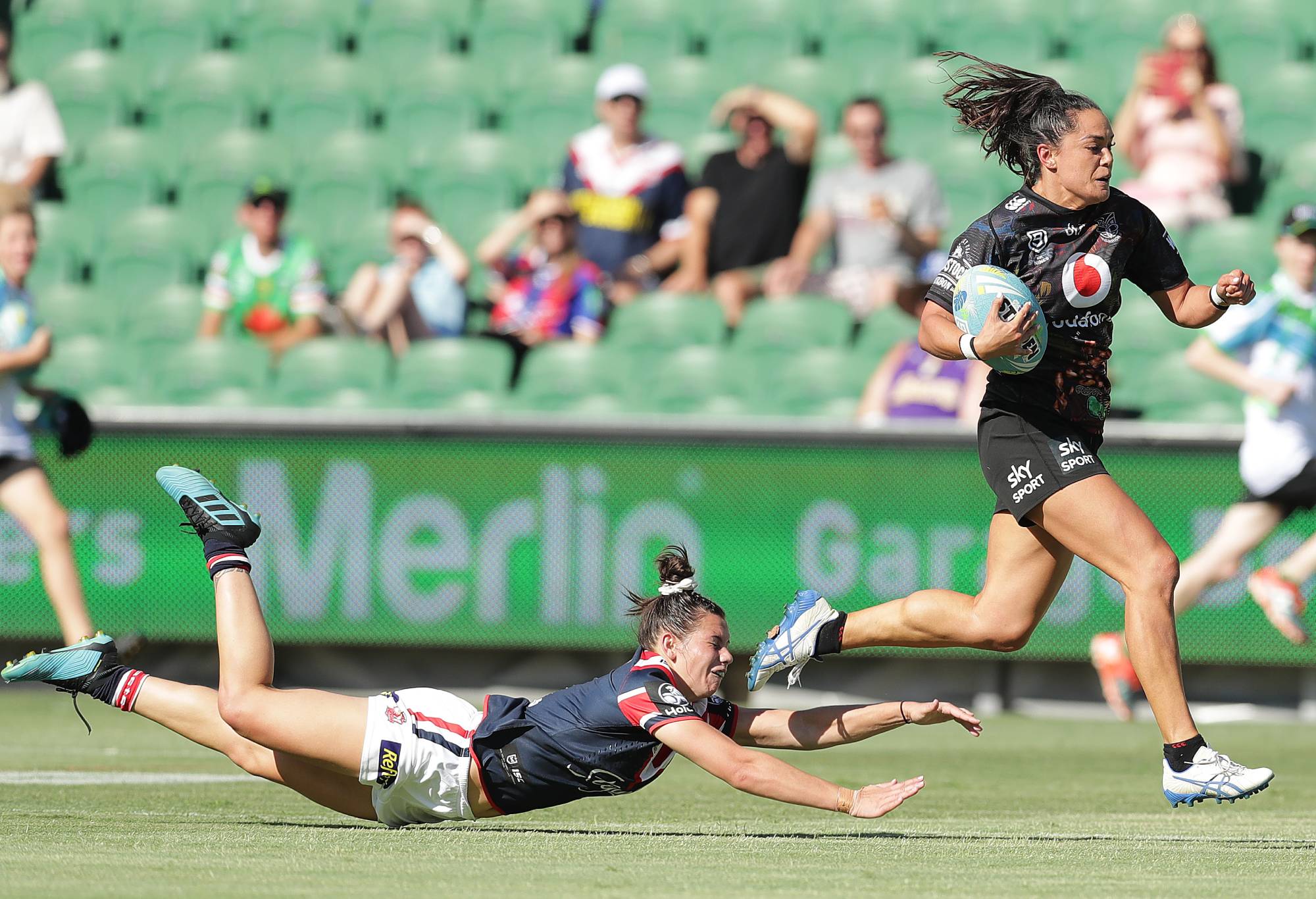
Shontelle Stowers on the run for the Warriors in 2020. (Photo by Will Russell/Getty Images)
Shontelle Stowers, an NRLW star who played Women’s Origin and represented Australia at Sevens, said that vā would be second-nature to footy players.
“Intrinsically we would call it ‘connection’ or ‘energy’ and that’s the space that we’re talking about, the things that you can’t see necessarily but you can feel,” she said.
“Spaces like this add so much value to the experience of your career as an athlete.
“The more that these clubs send their administration and wellbeing managers into these spaces, the more awareness they will have, and when our players come into their space, the more the connection they will have and the relationships they will grow will be stronger.
“The NRLW is in its infancy in terms of cultural frameworks, so it is crucial that we do start outing those frameworks in place and making them a first priority now, because the game is only growing. We need to not play catch-up and have it set in stone from this point on.”
Dr Lakisa and the other speakers – Dr Sierra Keung from the University of Technology Auckland and John Hutchinson, a player wellbeing expert with the NRL, Souths and Parramatta – spoke of the mana-enhancing environment, a space where all participants feel culturally validated.
If you’re looking for what a mana-enhancing space looks like, you’ll see it writ large this weekend in Campbelltown.
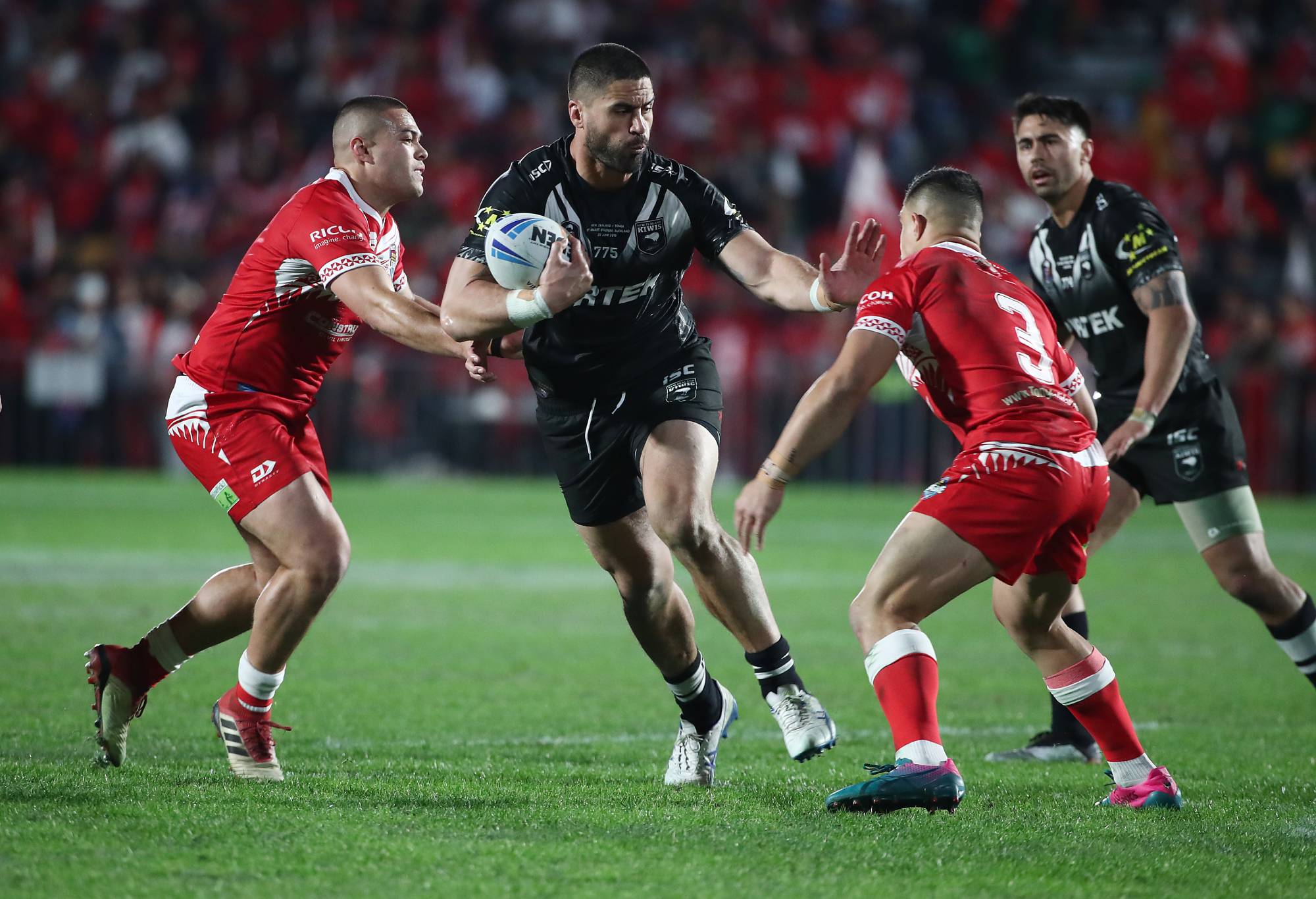
Jesse Bromwich is tackled in the 2019 Test between the Kiwis and Tonga at Mt Smart Stadium. (Photo by Fiona Goodall/Getty Images)
For Lakisa, the Pacific Tests are vital to foregrounding these cultural spaces in the fabric of the game, especially in terms of giving players the space to celebrate their culture.
“The Pacific Tests are critical for the game and the sport to help fans and players alike connect, reconnect, learn and relearn,” he told me.
“Everyone is on a learning journey at the moment, and that’s why these rounds are critical – not just to identity, but to their journey.
“We’re seeing that now. Devotionals are a key part of Pacific camps, but may not be as prominent in clubland. Cultural performance, whether that’s song or dance, may not be as prominent in clubland. The Pacific Tests play a huge role in helping stakeholders connect.”
It’s not just the playing group either. Lakisa has recently held conferences with Nine Media, who will be broadcasting the Pacific Tests, with issues like cultural acknowledgement and correct pronunciations front and centre.
“Our recent knowledge partnership with Wide World of Sports, which involves developing and creating culturally safe spaces for players, content producers and commentators to better engage and understand Pacific people in sport,” said Lakisa.
“One aspect is authentic pronunciations of Pacific people, because of the significance of ancestral ties and the values of spirituality, respect, family and culture.
“I’m really excited for organisations like Nine who are investing in this space because it provides industry-leading opportunities and provides creative spaces for our society to play and enjoy.
“That’s the key. It’s the importance of shared spaces: often we think of someone doing something wrong and we need to fix it, but really it’s about helping to understand and co-design together.”





























































































